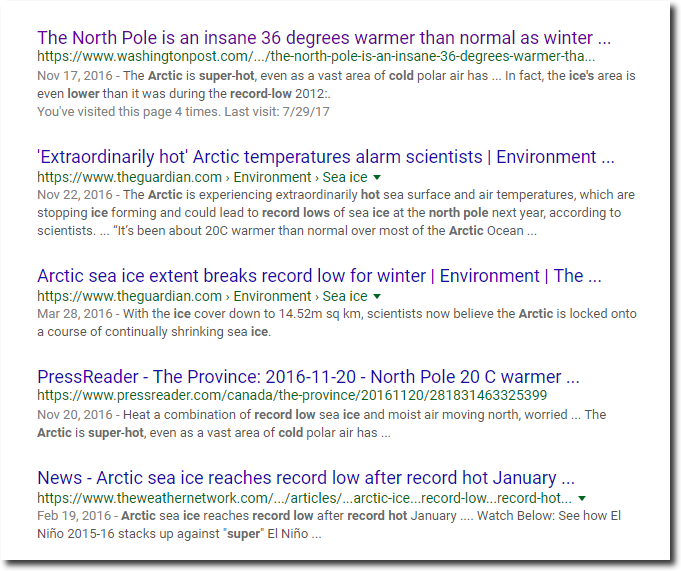 The sun in July 2017
The sun in July 2017
By Frank Bosse and Fritz Vahrenholt
(Translated/edited by P Gosselin)
Our source of energy and life at the center of our solar system was significantly below normal with respect to activity last month.
The measured sunspot number (SSN) was 18.3. That was only 36% of what is typical (51) this far into the solar cycle – calculated from the previous 23 solar cycles recorded.
The sun was completely free of spots on 11 days in July. Notable: while during last month the sun’s northern hemisphere was more active (in June all sunspots were in the northern hemisphere), last month the southern hemisphere was the most active part with 60% of the sunspots appearing there. The following diagram shows the course of solar cycle 24 thus far:

The current solar cycle 24 (red) compared to another similar solar cycle 5 (black) and the mean of the previous 23 cycles (blue).
The following chart is a comparison of all the solar cycles, 104 months in:

Comparison of sunspot activity of all cycles since 1755, accumulated deviation from the mean.
The outlook for solar activity that is coming after the current cycle is somewhat uncertain. The error in the polar field data that has been known since May 2017, still has yet to be corrected. Thus it is not possible to make any reliable forecasts for the strength of the upcoming cycle.
One thing is certain, however: the cycle will be again below normal strength. The field experiment surrounding a long inactive sun thus continues.
=======================
The first chart above shows that the current cycle is the weakest since solar cycle 6, which occurred close to 200 years ago.
Read more at No Tricks Zone

















So the solar flares and sun spots are fewer and even though the sun a is 93 million miles away its still a bigger influance on our weather then any SUV’s or Backyard BBQ,s